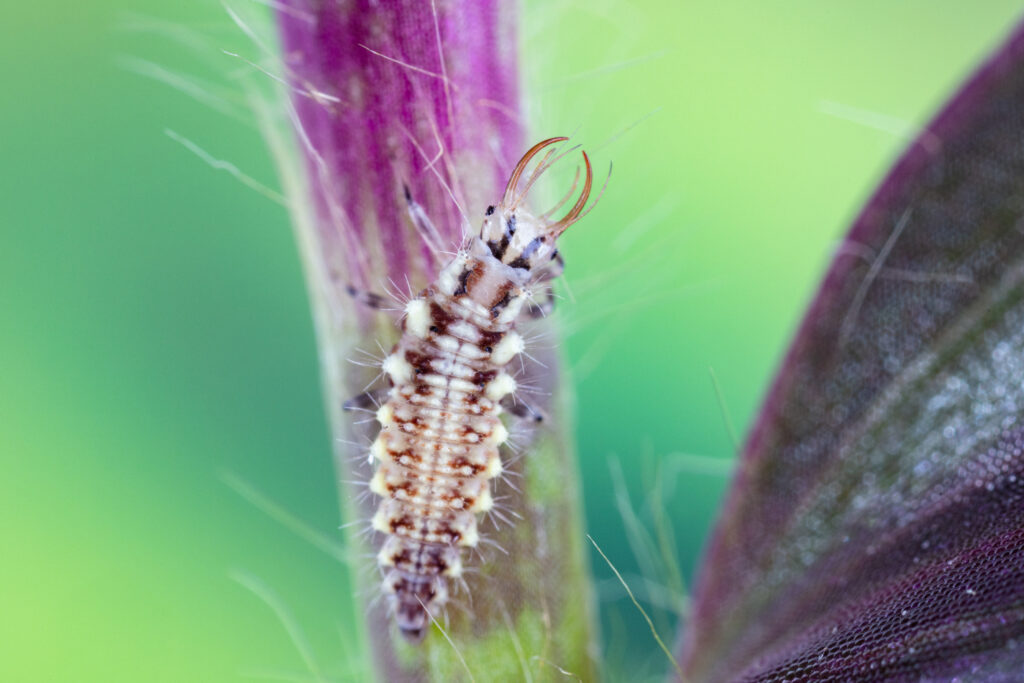
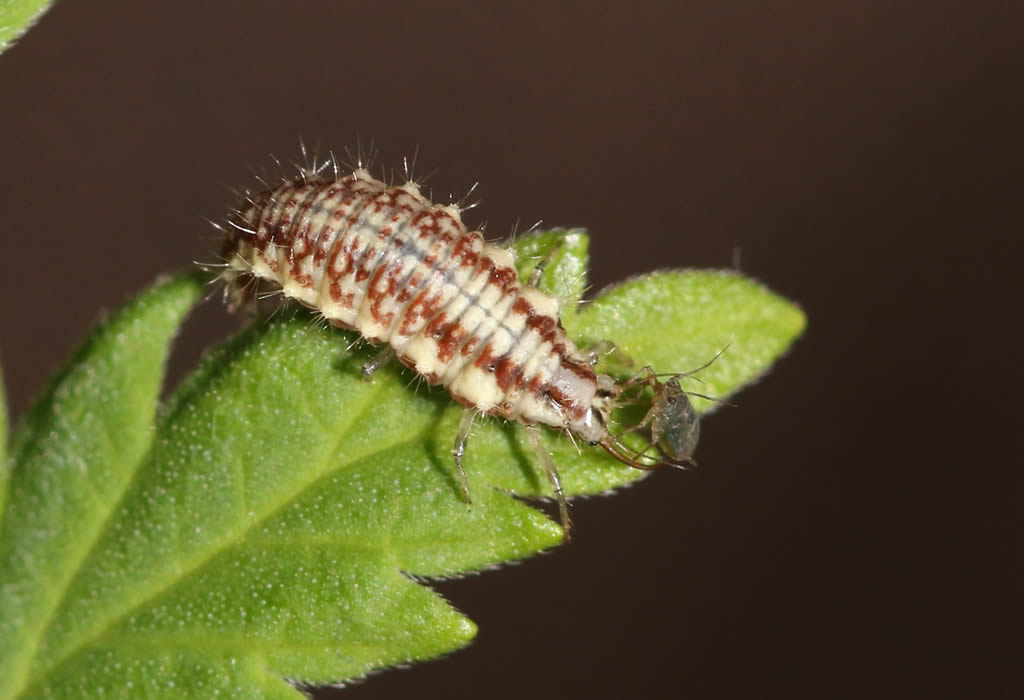
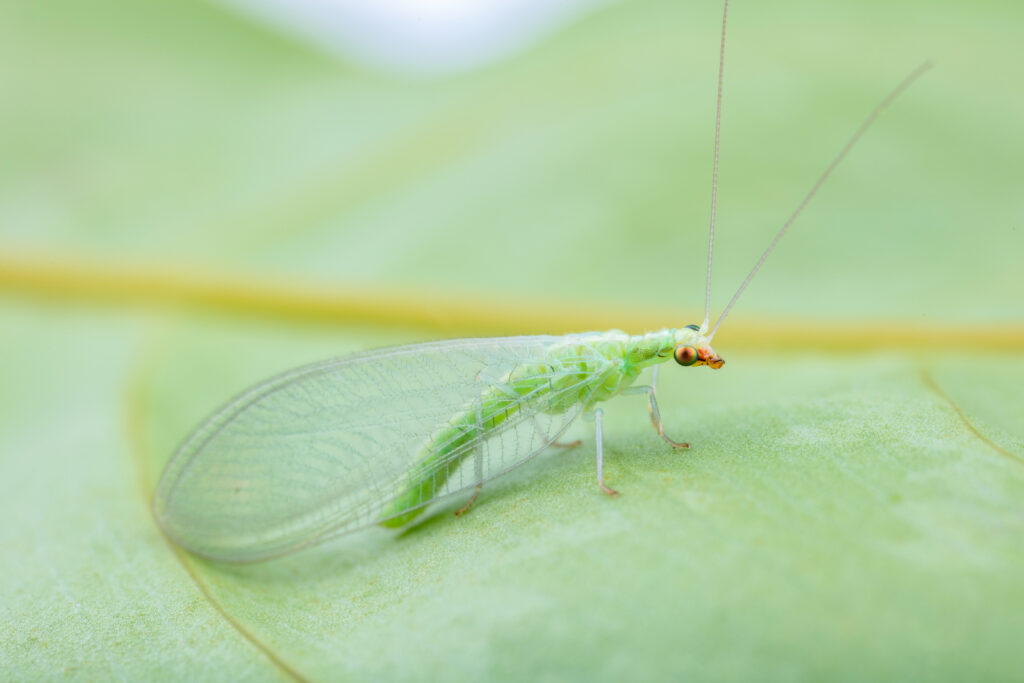
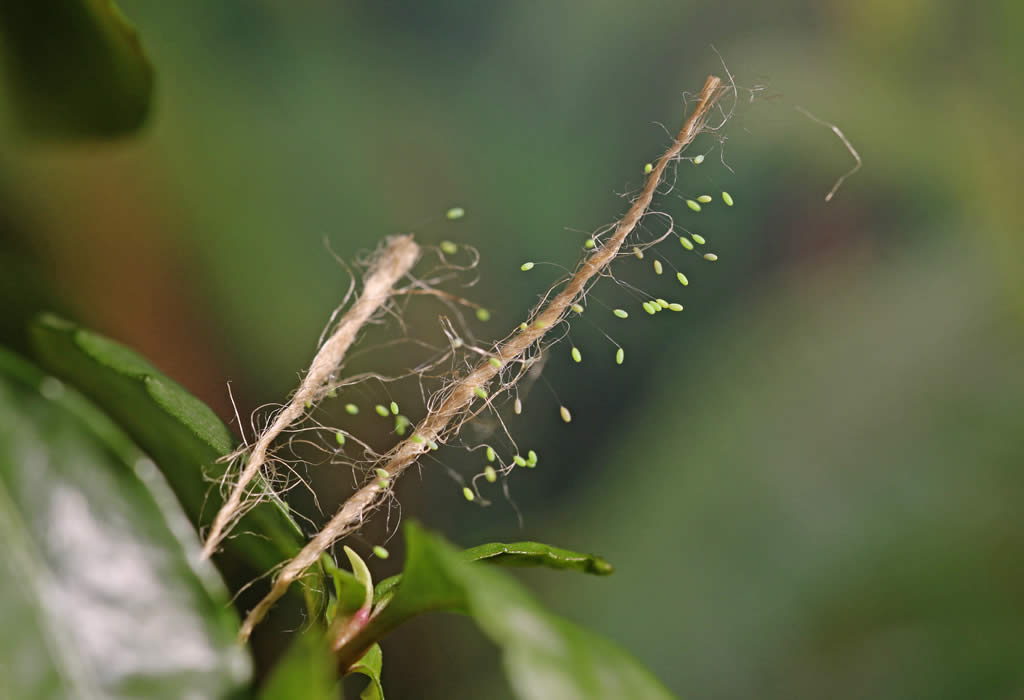
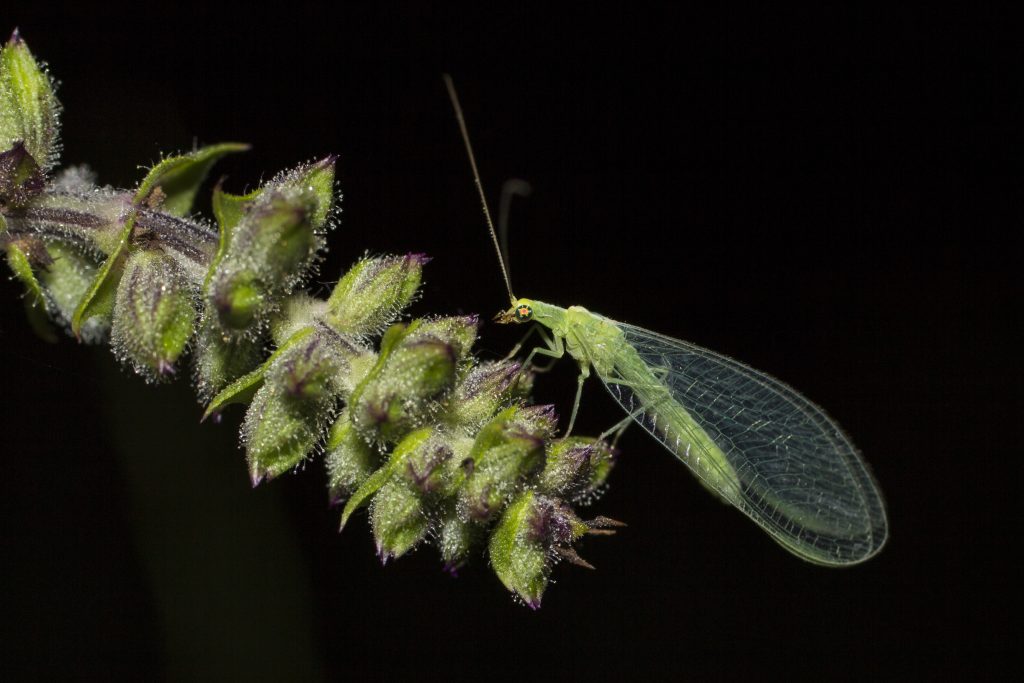
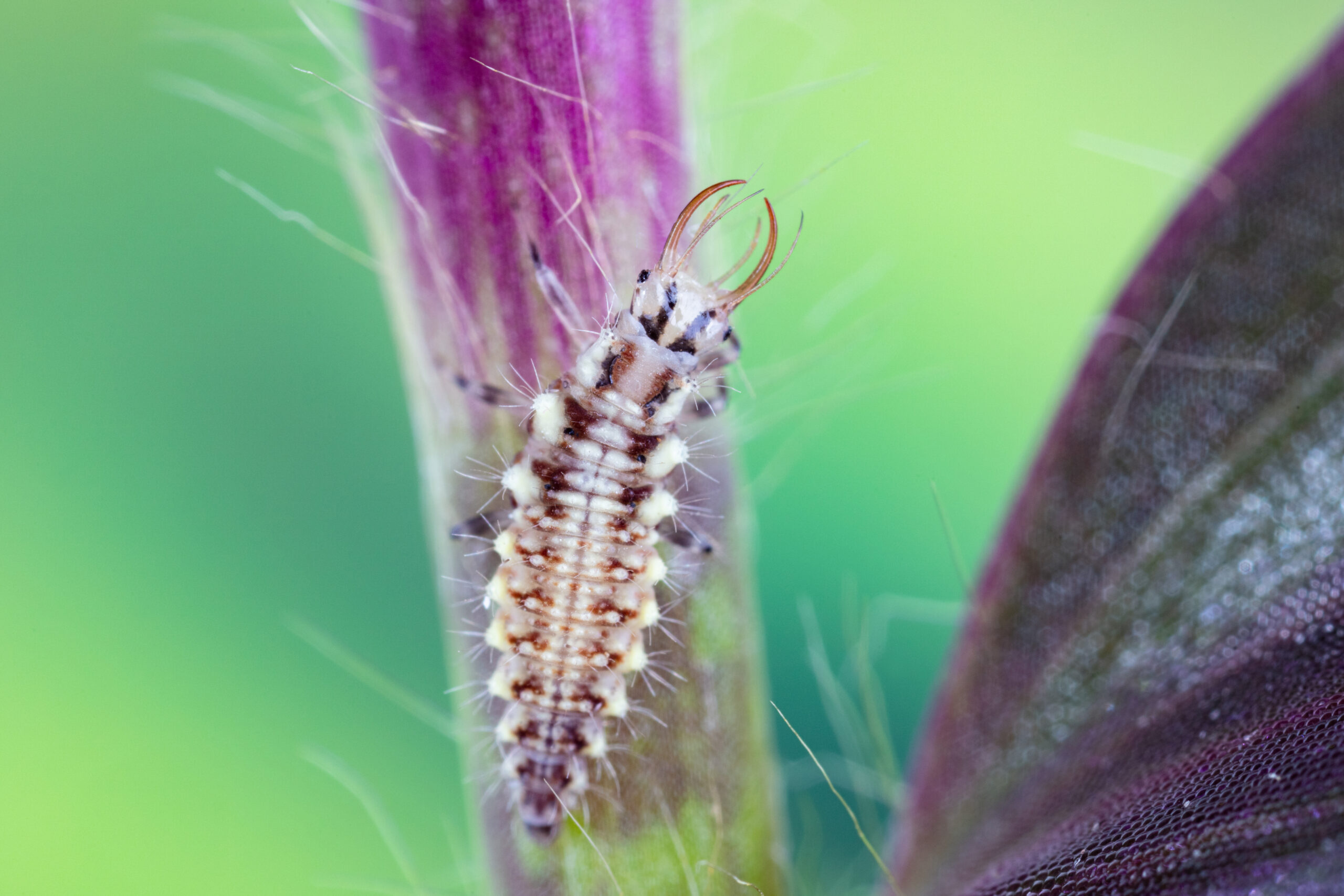

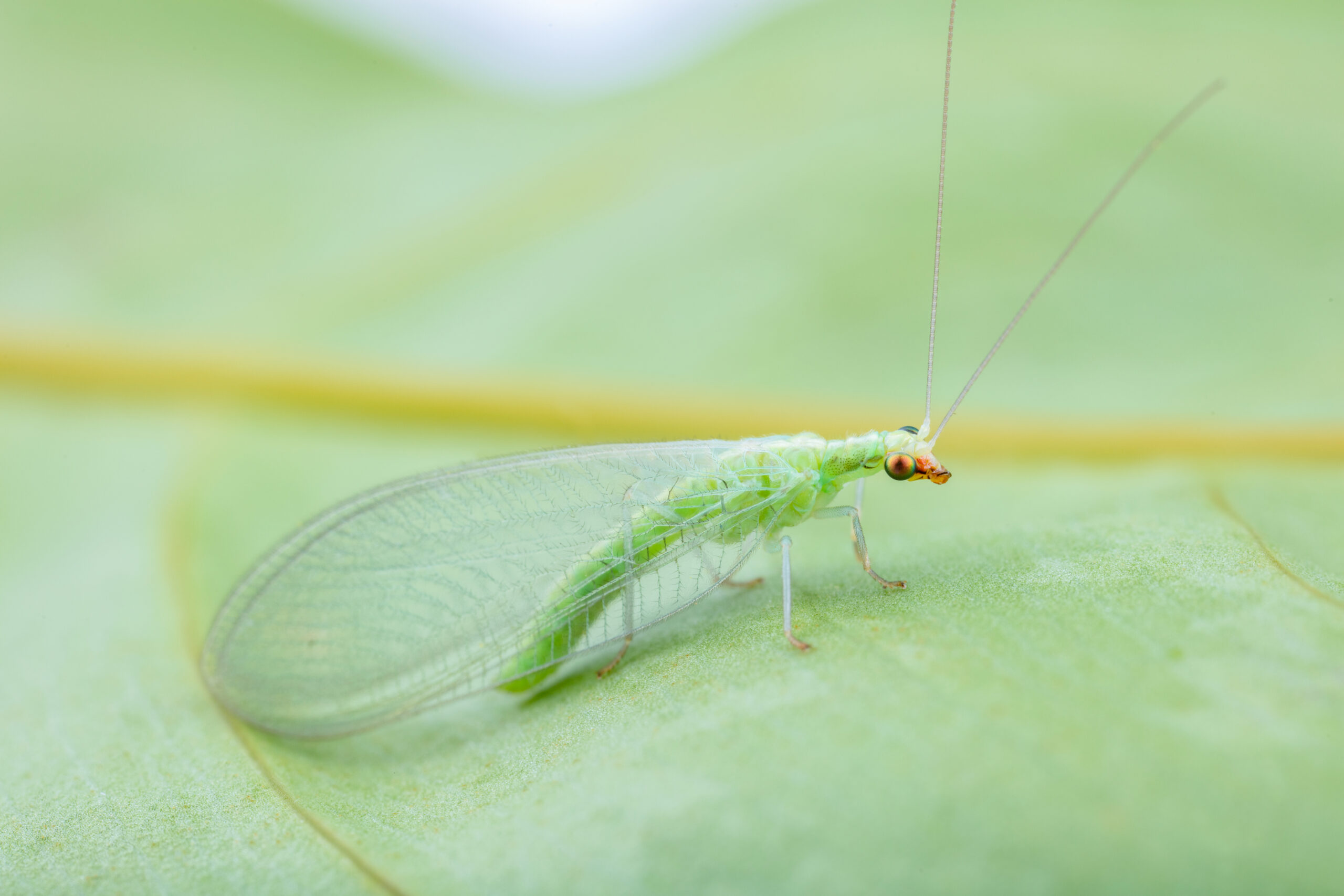

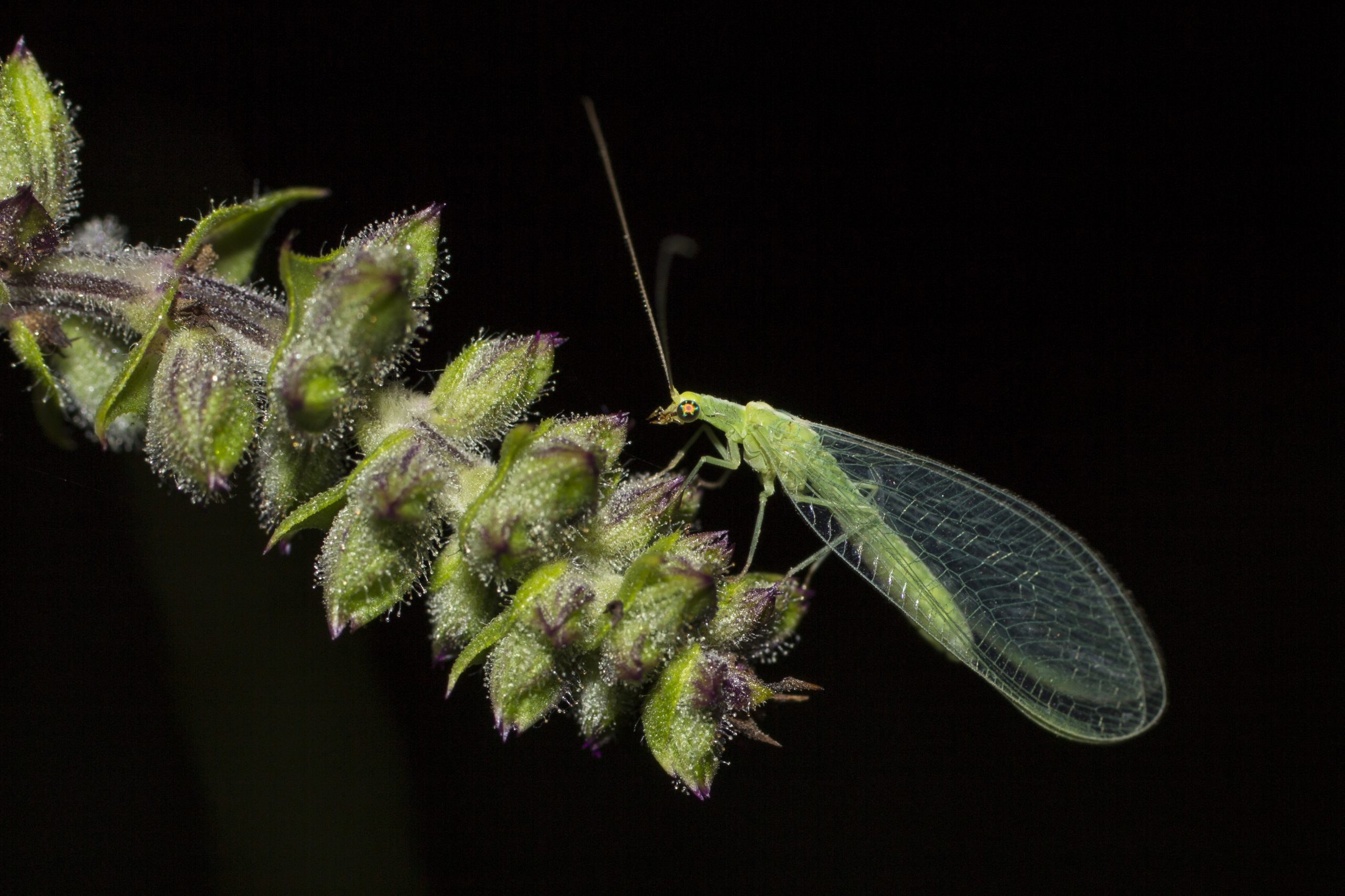
Chrysoperla carnea
please send us an email to :

Targeted crops
- Cannabis
- Cucumbers
- Eggplants
- Herbs
- Ornamental
- Peppers

Targeted pests
- Aphids
- Mealybugs
- Small caterpillars
- Spidermites
- Thrips
- Whiteflies

Application Instructions
Application – Larvae
Green lacewing larvae are mainly used in cultivation of cannabis, vegetable crops (cucumber and peppers), ornamental crops and in interior landscaping. Sprinkle the larvae directly in aphid colonies or in the infested areas. Avoid foliar applications of pesticides. Introduce at regular intervals until controlled. This biological control agent does not establish itself in greenhouses, therefore it will need to be applied continuously as needed.
Note: Ants can attack lacewing larvae.
Application – Eggs
The eggs on jute string can be carefully removed from the container and yarn can be separated. Place strings on the foliage near aphids. Loose eggs can be applied by gently sprinkling across foliage and/or on top of plants.

Storage Instructions
Chrysoperla carnea thrives in a diverse temperature range, with best performance at 68-82°F (20-28°C). This insect performs even under moderate temperatures of 12°C/54°F.
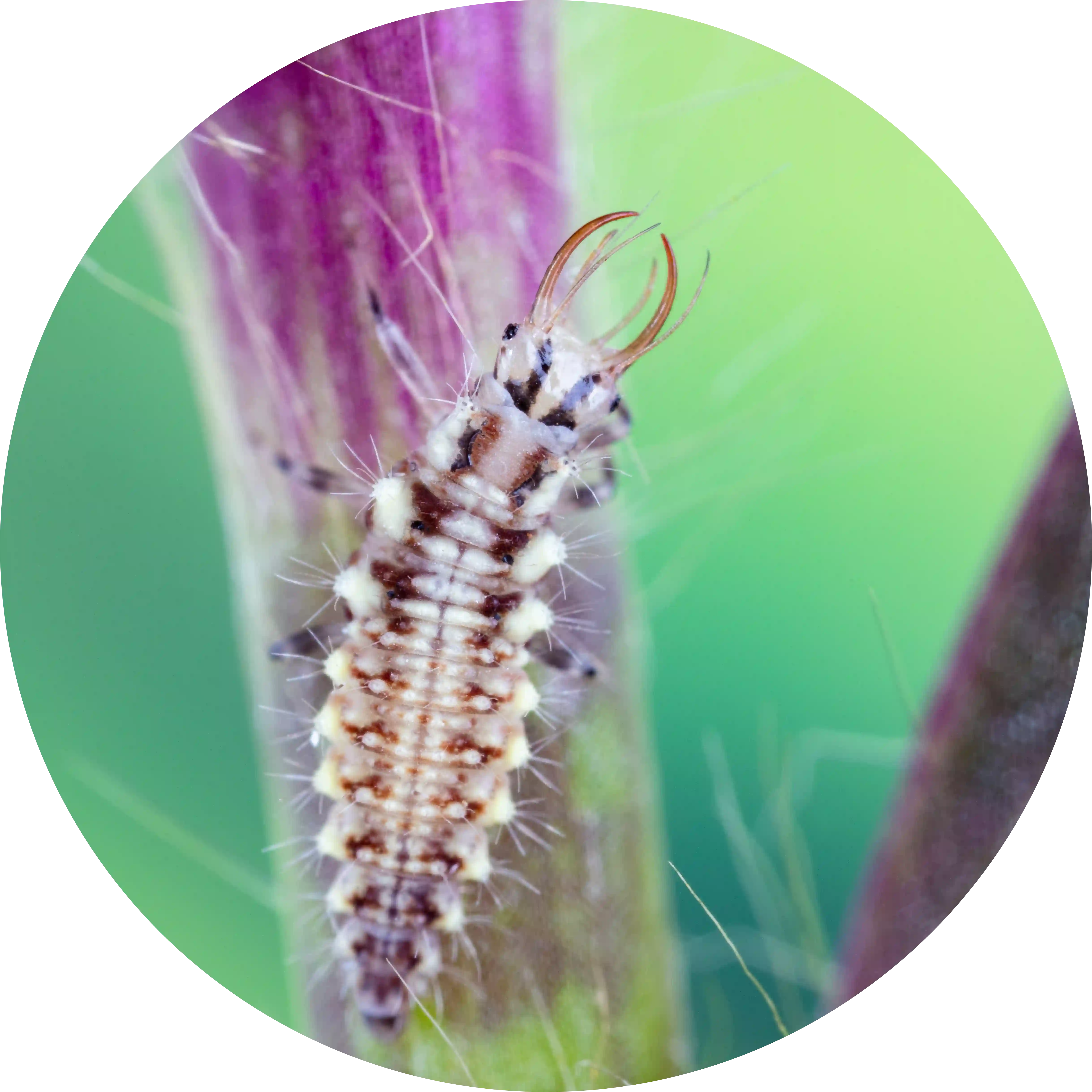



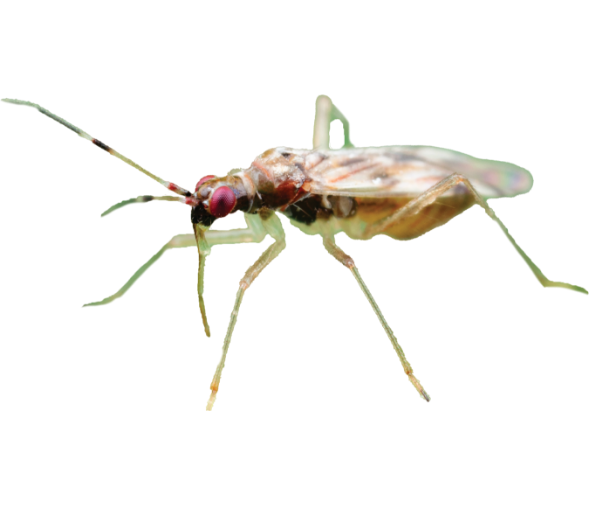

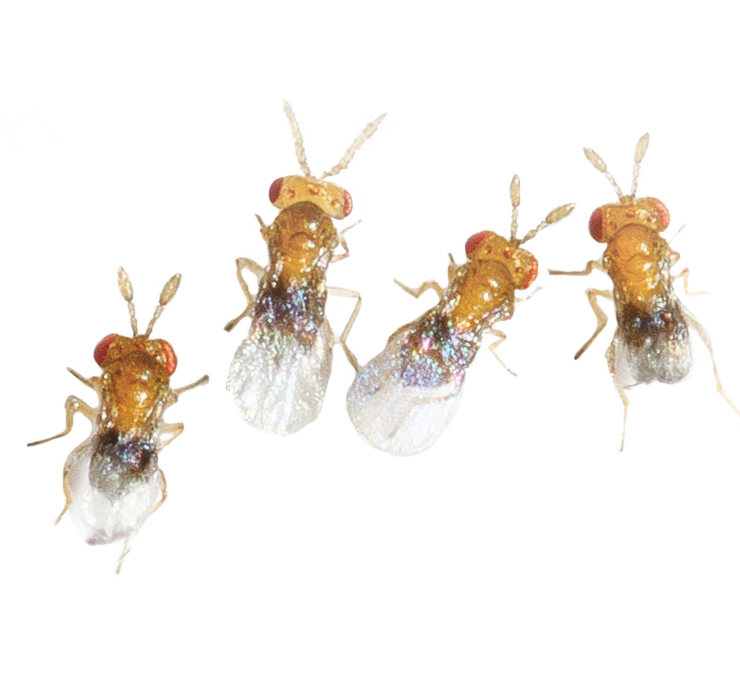
Description
Chrysoperla carnea, more commonly known as Green lacewing and native to Canada, is part of the Neuroptera family. It has an adult size of 2 cm with pale green coloring and translucent oval wings that give it its lacy appearance.
The eggs are laid near aphid colonies on plants attached by a stem measuring 1 cm in length while its strong jaws allow larvae to feed on thrips, whiteflies, moths, beetles, small larvae, mealy bugs, psyllids and mites. Adulthood brings pollen-feeding at dusk along with nectar from flowers or honeydew produced by their prey species.
Lacewings are renowned for their pest control capabilities, especially in greenhouses and other enclosed areas.